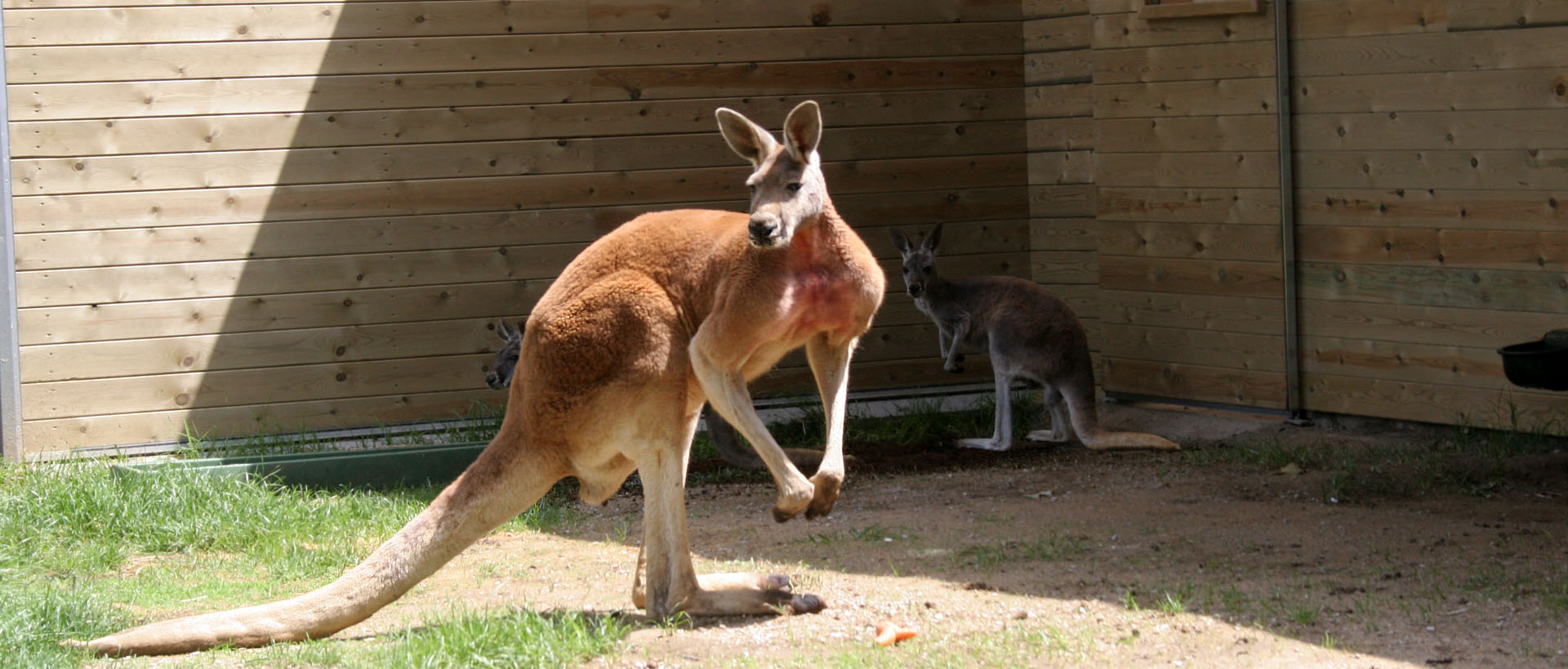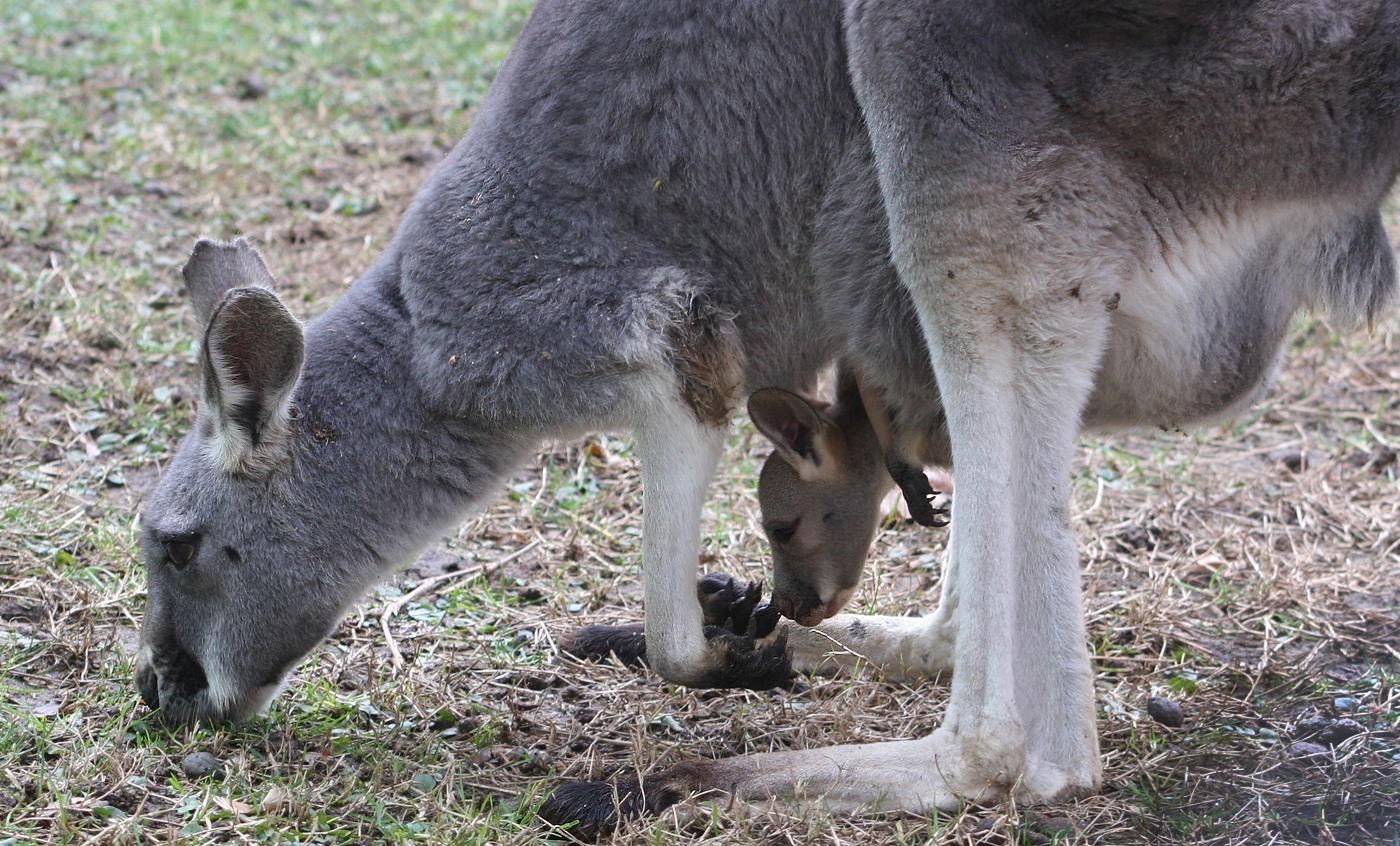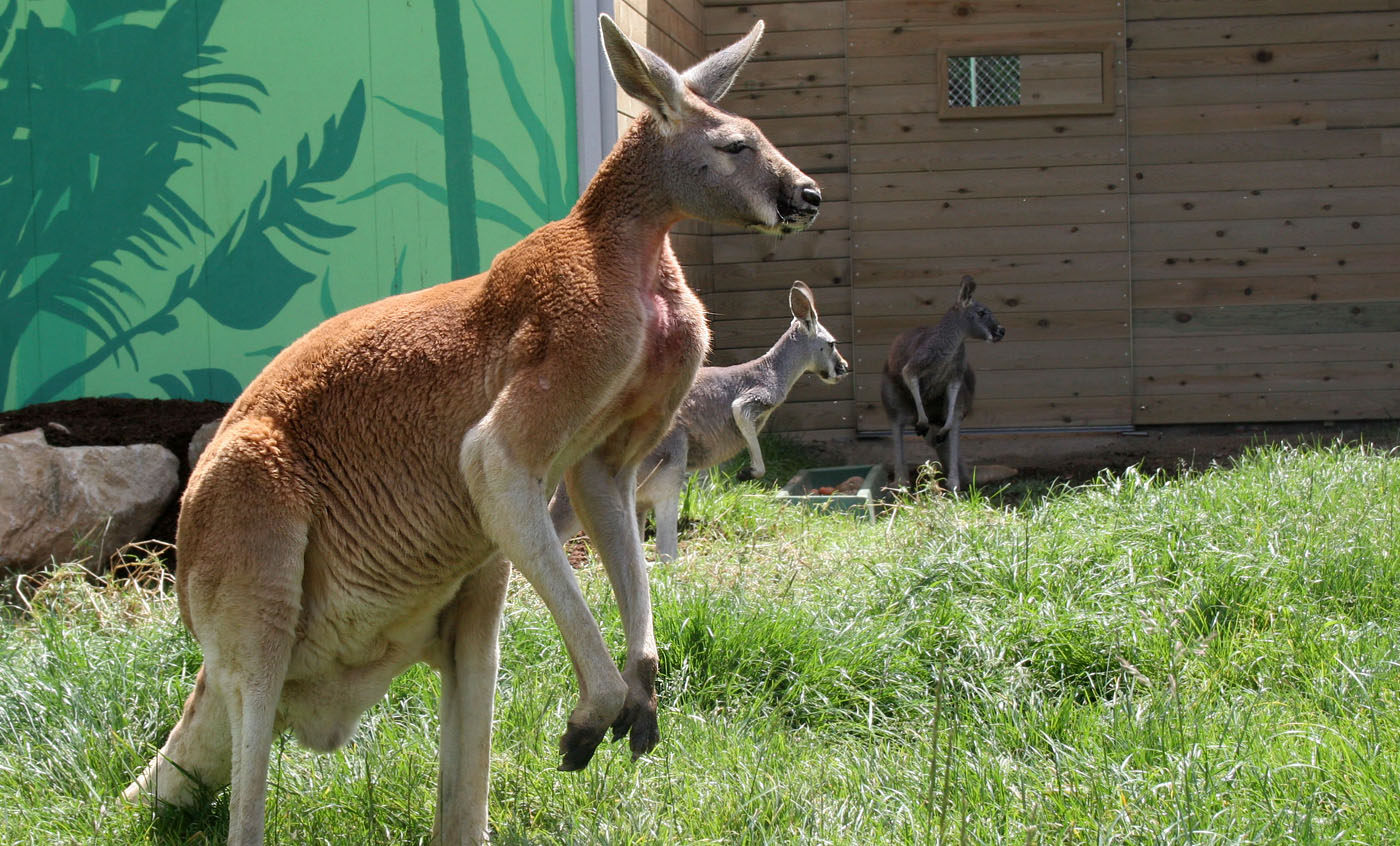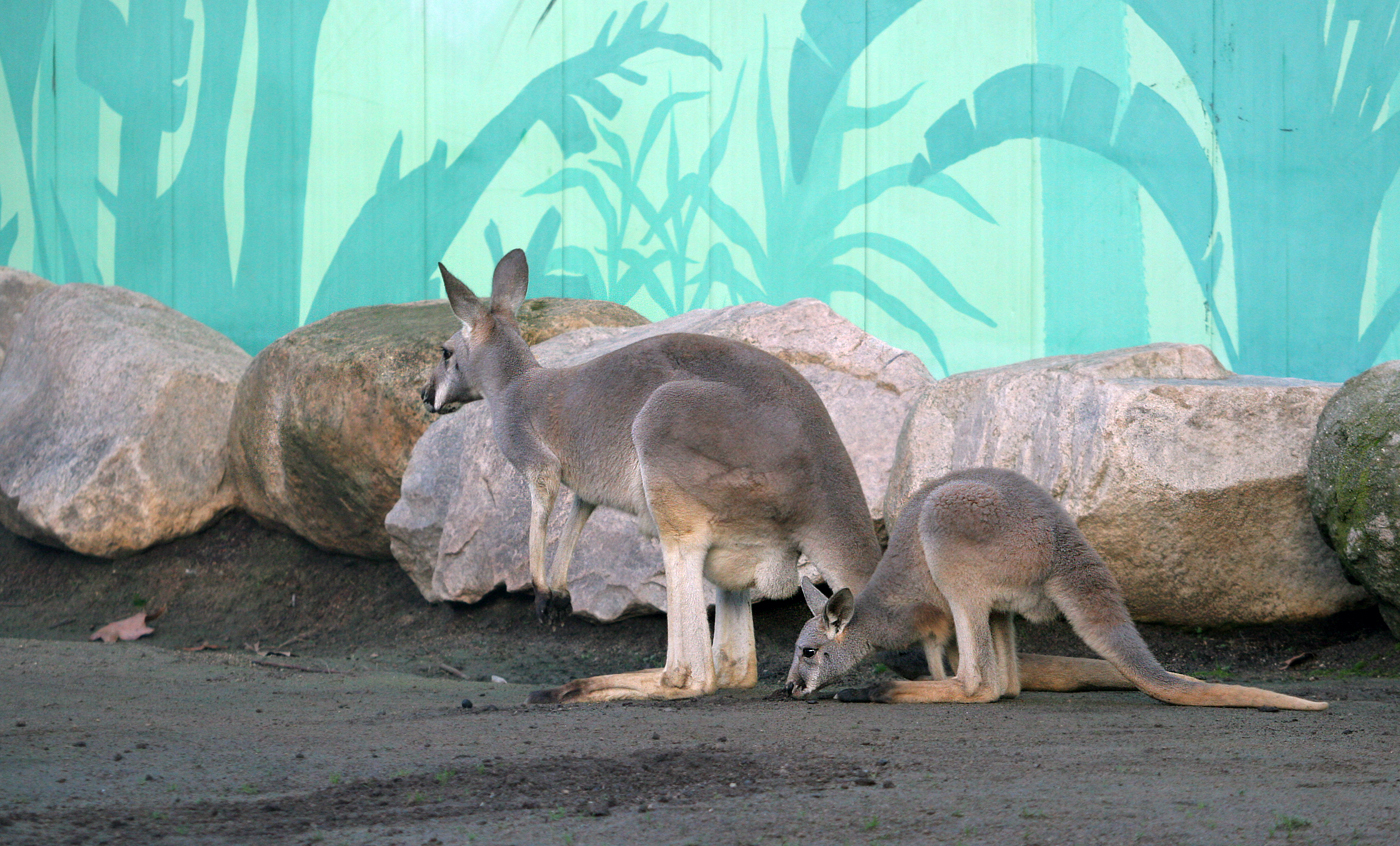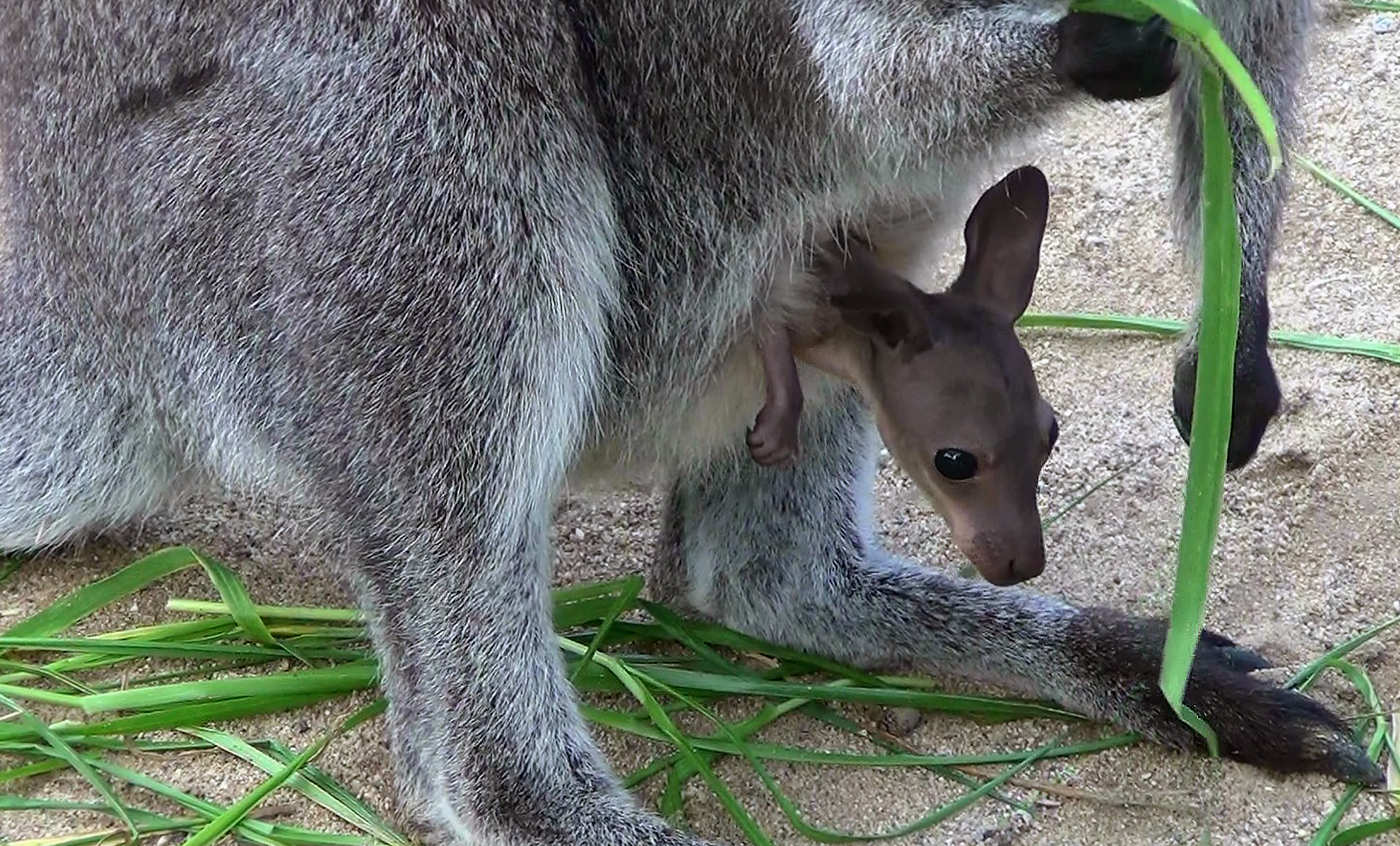Red kangaroo
The red kangaroo is the largest of the marsupials. The males can grow up to 2 metres long and weigh up to 90 kg. They have red coats, while the females are smaller and coloured grey. They can jump up to 9 metres in length.
They are numerous in the wide, open, almost desert regions in central and western Australia, which is their natural habitat.
Breeding program
Natural habit
Central and western Australia
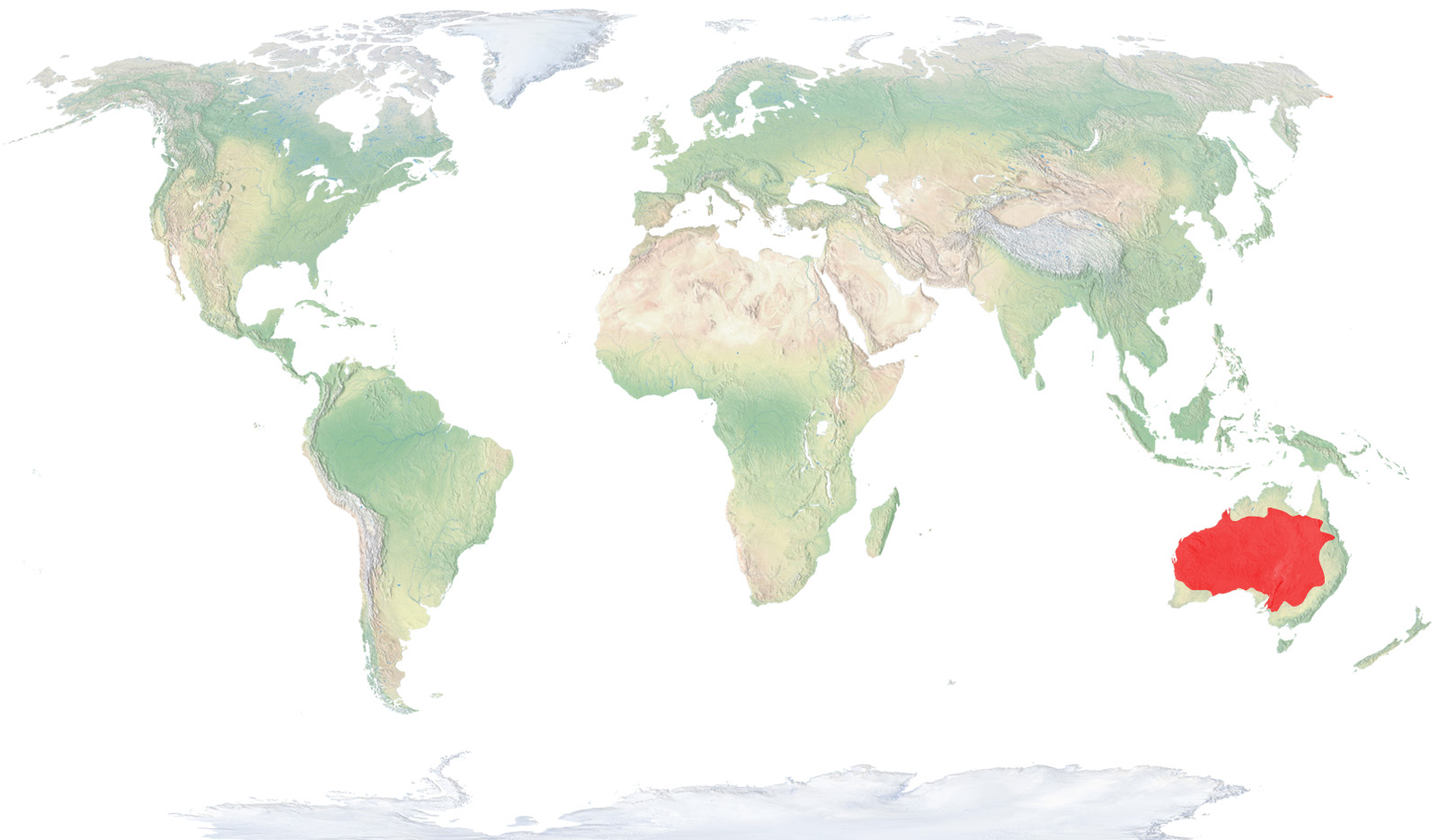
- Distribution / Resident
- Breeding
- Wintering
- Subspecies
Risk level
- Extint
- Extint in the wild
- Critically endangered
- In Danger
- Vulnerable
- Near threatened
- Minor concern
- Insufficient data
- Not evaluated
Taxonomy
Physical characteristics
Biology
Reproduction
Biology
The red kangaroo is the largest current marsupial, as it can reach lengths of 1.4 metres, with tails up to 120 cm. Males, which can weigh over 90 kg, tend to have redder fur and are larger, while females are a pearl grey colour. It tends to stay in a biped position, with its tail as a third support point. Red kangaroos cannot move by walking, and instead jump. In a quadruped position, they travel by moving their two rear legs at the same time.
Their regular habitat is the extensive open regions of Central and Western Australia.
They feed on grass and leaves of bushes, which they primarily ingest first thing in the morning and at sunset, remaining in shade during the hottest hours of the day.
The red kangaroo mates opportunistically, when environmental conditions are favourable, and like other kangaroo species, mating can take place just after birth, so that a dormant blastocyst is produced that will develop later, when the baby from the previous birth abandons the marsupial, or pouch. Normally only one baby—or joey—is born after 33 days of gestation, which pulls itself up the hairs of the mother’s abdomen until reaching the pouch, following the route that the mother has marked by licking. Once within the marsupial, it latches onto one of the two teats and stays there some eight months, even though it will return to nurse again for a few more months, until the next joey is born. The connection with the mother lasts until sexual maturity.
They tend to live in small groups, although food shortages can lead them to form larger groups. There are also more solitary individuals. Fights often break out in the groups for domination among the males, who hit each other with their forelegs, like a boxing match. They can also kick with their rear legs, using the tail to stabilise themselves and support their weight.
Kangaroos move at great speeds by jumping, entailing a synchronous movement of the two rear legs. This type of movement is very effective at high speeds, consuming very little energy. In order to travel more slowly, they also use their tails, operating like a tripod with the front legs, conferring stability.
Red kangaroo jumps can be up to 3 m high and 10 metres long, and it can reach speeds of up to 50 km/h.
There are still abundant populations of these animals in specific regions and controlled hunting is even employed to regulate their numbers.
The Barcelona Zoo participates in this species’ ESB.



